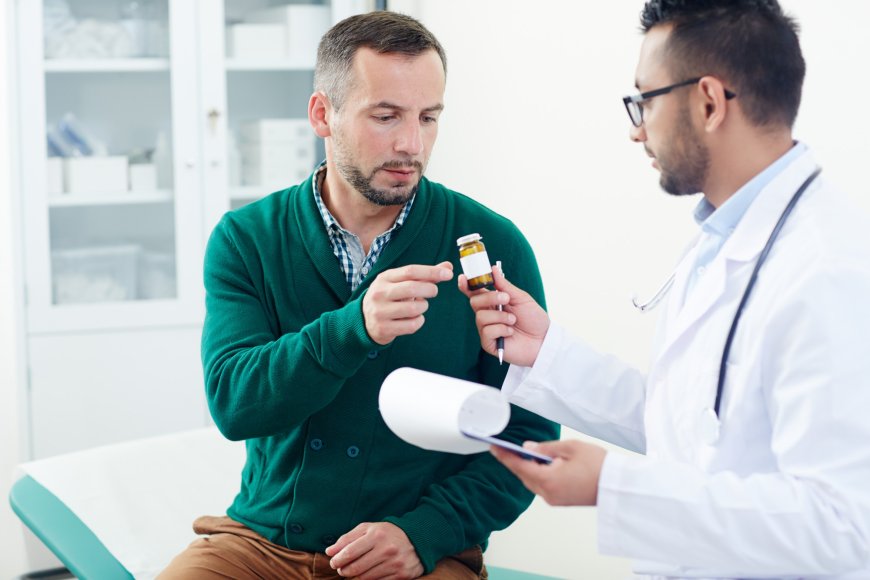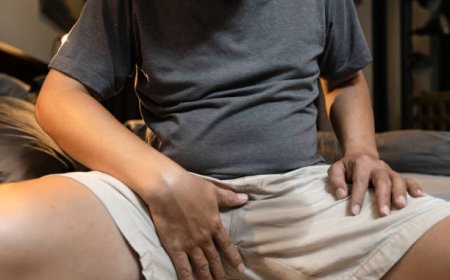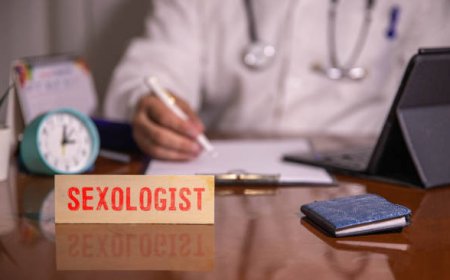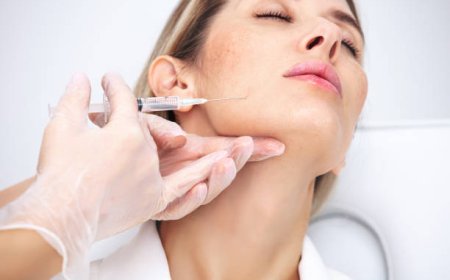Top Symptoms of Low Testosterone and How to Recognize Them
Learn the key symptoms of low testosterone, including fatigue, low libido, and mood changes. Discover how testosterone therapy can help restore vitality.

Low testosterone levels can quietly but significantly impact your physical, emotional, and mental well-being. Known as low testosterone or hypogonadism, this condition occurs when the body produces insufficient levels of testosteronea critical hormone responsible for various vital functions in both men and women. While often associated with aging, it can occur at any stage of life and might be affecting you without your realization.
This blog explores the key low testosterone symptoms, helping you recognize the warning signs early. From changes in energy to shifts in mood and physical decline, understanding these symptoms is your first step toward addressing the issue. Paired with options such as testosterone therapy, you can take actionable steps to reclaim your health and quality of life.
What Is Testosterone and Why Does It Matter?
Testosterone is a vital hormone primarily produced in the testes for men and in smaller amounts by the ovaries and adrenal glands in women. It influences a wide range of bodily functions, including:
- Muscle and bone strength
- Libido and sexual performance
- Mood regulation
- Red blood cell production
- Fat distribution
Testosterone levels naturally decline with age, typically starting around age 30, but drastic reductions or imbalances can lead to uncomfortable and potentially harmful symptoms.
Low Testosterone Symptoms at a Glance
Low testosterone manifests in both physical and emotional ways, and these symptoms can vary from person to person. Below, we break down the most common warning signs into key categories.
1. Persistent Fatigue
One of the hallmark symptoms of low testosterone is unexplained fatigue. If you feel perpetually tired despite adequate sleep or find daily tasks exhausting, low testosterone could be at play.
How It Feels:
- Persistent sluggishness physically and mentally
- Everyday activities, such as exercising or walking, feel more effortful
What To Do:
- If you suspect your energy levels are abnormally low, discuss testing options with your healthcare provider.
- Testosterone therapy is a common and effective solution to restore vitality.
2. Low Libido and Sexual Function
A major red flag for low testosterone symptoms is a noticeable decline in sexual interest or performance. Testosterone drives libido, and insufficient levels can lead to challenges in maintaining a healthy sexual life.
Signs to Look For:
- Decreased interest in intimacy
- Erectile dysfunction in men
- Reduced sexual satisfaction in both men and women
Why It Matters:
- While libido naturally fluctuates with stress or age, a sustained lack of interest might indicate an underlying medical condition like low testosterone.
- Exploring options such as testosterone therapy could help restore balance.
3. Mood Swings and Emotional Changes
Testosterone is closely linked to mood regulation, so imbalances may lead to emotional symptoms. You may find yourself experiencing irritability, sadness, or unexplained mood swings.
How It Manifests:
- Increased anxiety
- Feelings of depression
- Heightened irritability or impatience
For individuals with low testosterone symptoms, these emotional shifts are often accompanied by physical lethargy, compounding the overall impact on daily life.
Helpful Tip:
Exercise, counseling, and healthcare consultations can all work together to stabilize mood while exploring potential testosterone therapy treatments.
4. Loss of Muscle Mass and Increased Body Fat
Low testosterone naturally impacts your bodys ability to maintain muscle mass while also affecting how fat is distributed. Over time, you may notice weakened strength and stubborn fat deposits, especially around the abdomen.
Common Signs:
- Loss of muscle tone
- Unexplained weight gain
- Reduced strength and endurance
This physical symptom is one of the most discouraging effects of hypogonadism, particularly for individuals prioritizing fitness.
How To Address It:
- Strength training, a balanced diet, and medical interventions like testosterone therapy can help rebuild muscle tone and promote healthier fat distribution.
5. Hair Loss
Another visible clue of low testosterone symptoms is hair thinning or loss. Testosterone contributes to hair growth, and reduced levels may accelerate hair loss on the scalp and body.
What You Might Notice:
- Thinning hair on the head
- A reduced amount of body or facial hair
While genetics also play a significant role in hair loss, sudden or increased hair thinning warrants attention, especially if paired with the other symptoms highlighted above.
6. Difficulty Concentrating and Memory Loss
Brain fog is a lesser-known but significant low testosterone symptom. Hormone imbalances can impair cognitive function, impacting your ability to focus, solve problems, or retain information.
Real-Life Impacts:
- Forgetting key details or scheduled tasks
- Struggling to concentrate at work or during conversations
This symptom may compound the emotional effects of low testosterone by increasing frustration. Seeking advice from a healthcare professional can guide you toward tailored treatment strategies.
Causes of Low Testosterone
Understanding the potential causes of low testosterone is essential for both prevention and treatment. Common causes include:
- Aging: A natural decline generally begins in your 30s.
- Medical Conditions: Diabetes, obesity, or autoimmune diseases can contribute to lower testosterone.
- Lifestyle Factors: Poor diet, lack of exercise, and chronic stress may worsen hormone levels.
- Medications or Medical Treatments: Certain medical interventions can negatively impact testosterone levels.
The causes vary between individuals, so proper diagnosis is critical.
Why You Should Seek Medical Advice
Experiencing one or more of these symptoms doesnt necessarily mean you have low testosterone, but they are worth exploring with a trusted healthcare provider. Early intervention makes all the difference in addressing symptoms effectively and avoiding future complications like osteoporosis, infertility, or chronic fatigue.
Diagnosis and Solutions
Diagnosing low testosterone typically involves a simple blood test. If confirmed, treatment options might include:
- Testosterone Therapy: Delivered through injections, gels, or patches, this therapy helps restore hormone balance and alleviate symptoms.
- Lifestyle Adjustments: Diet, exercise, stress management, and sleep optimization are key components for improving overall health.
Your doctor may also help address underlying issues contributing to low hormone levels.
Final Thoughts
Recognizing low testosterone symptoms is your first step toward regaining control of your physical and emotional health. From extreme fatigue to less noticeable signs like brain fog or hair loss, these symptoms can interfere with your quality of life and relationships.
Fortunately, targeted interventions like testosterone therapy can significantly reverse these effects. Whether youre dealing with a loss of libido, mood changes, or diminishing strength, talking to a healthcare professional opens the door to a tailored treatment plan and a brighter, healthier future.
Low testosterone is not just a part of agingits a condition with clear solutions. If youre experiencing any of the symptoms discussed, take action today to reclaim your vitality and confidence.























